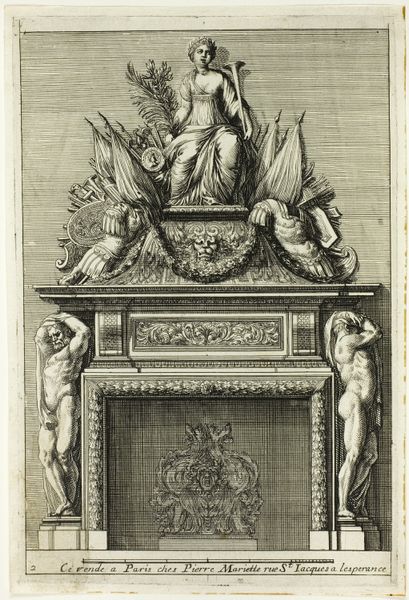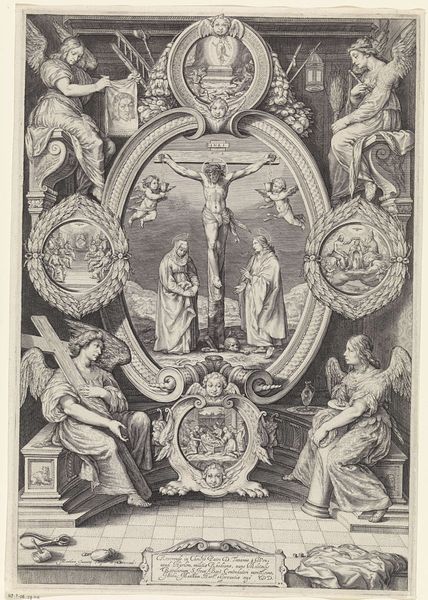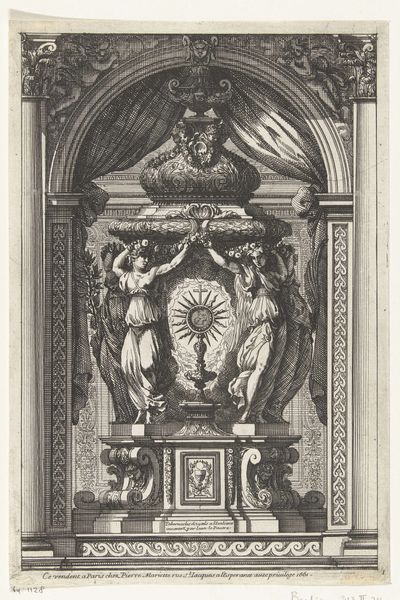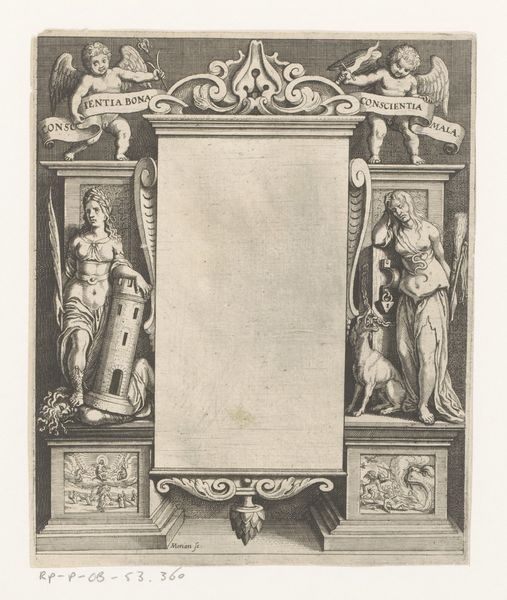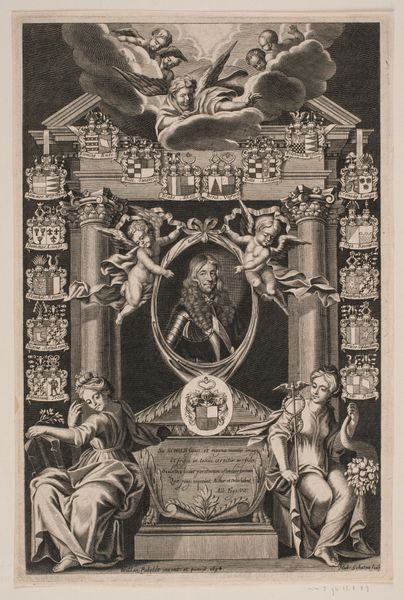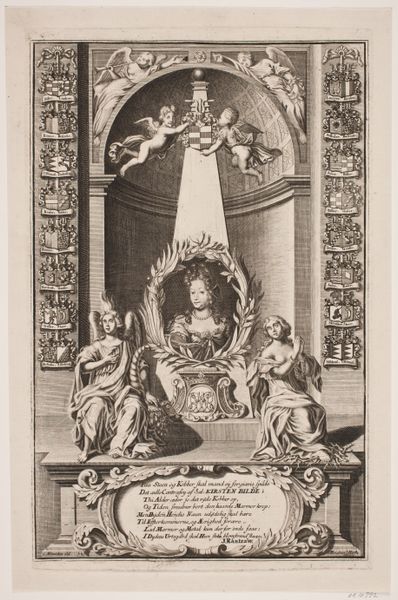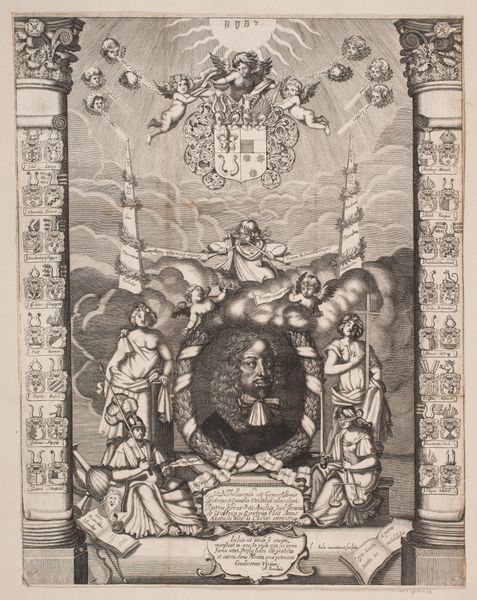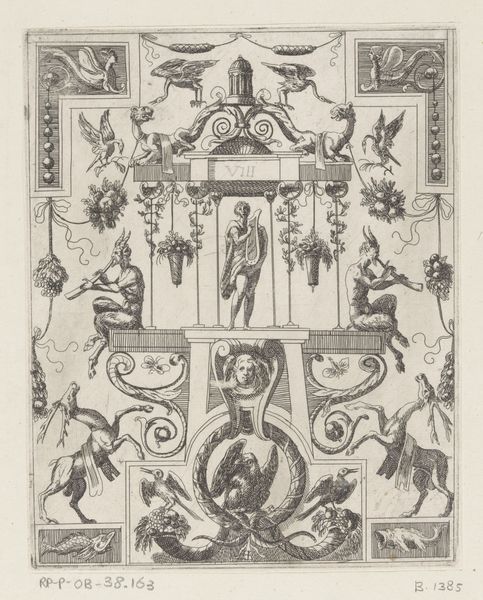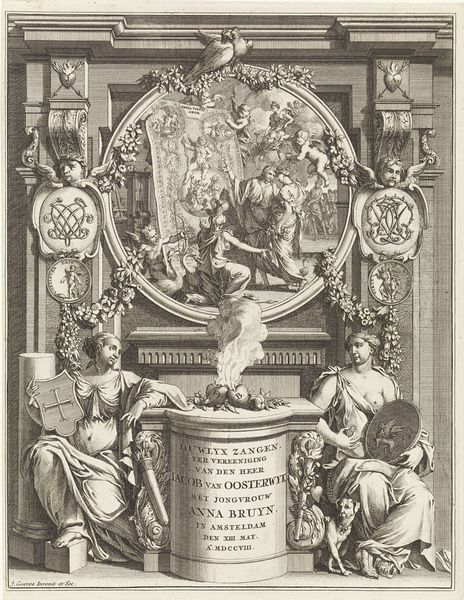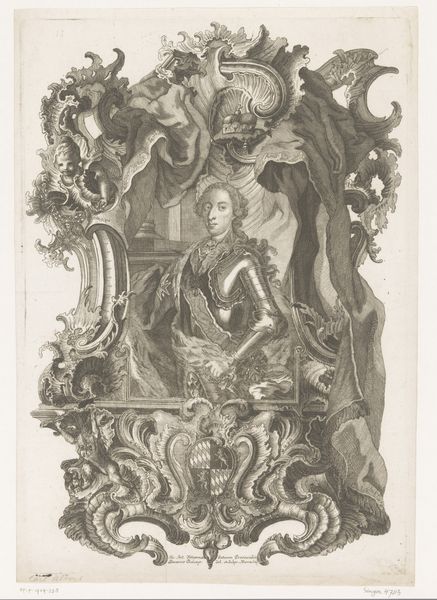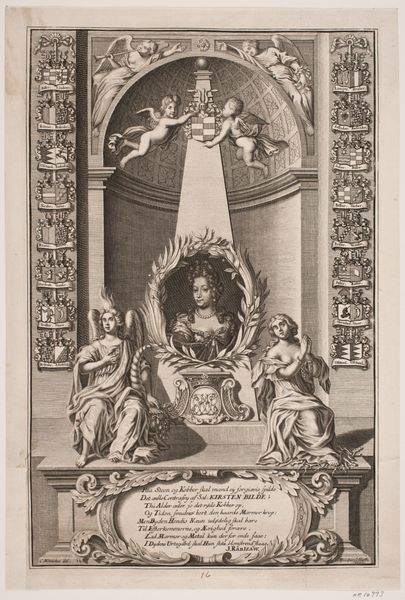
print, engraving
#
portrait
#
allegory
#
baroque
# print
#
history-painting
#
engraving
Dimensions: 315 mm (height) x 204 mm (width) (plademaal)
Editor: This engraving from 1699 is titled "Jørgen Skeel til Estrup" by Andreas Reinhardt. The detail is astonishing! The way the light catches on the armor and the sheer number of symbolic figures… It's quite a production. What can you tell me about its historical context? Curator: Indeed, it is a complex image meant to convey very specific messages. Given that this is a print, designed for wider distribution, and the presence of angels and allegorical figures surrounding Jørgen Skeel, what do you think it was trying to achieve, particularly in terms of his public image? Editor: I guess it's intended to glorify him. Like, immortalize his legacy with all these symbolic objects – the coat of arms, weapons, cherubs… the works. Were prints like these common for wealthy figures back then? Curator: Absolutely. Consider this as a form of early public relations, using art to shape perceptions and bolster social standing. Think of how portraits function even today – they project an image, often idealized, of the subject. But who gets to decide what that image is? Whose story is being told, and for whom? Editor: So it’s not just about showing him as important but controlling how people *think* about him and his position? The inclusion of family crests makes me wonder if this was more than a personal commission. Curator: Exactly. Patronage was about asserting power and maintaining the established social order. Prints circulated beyond the elite, influencing broader public perception of individuals and families. This helps frame how powerful families sought to be represented in public and across time. Editor: Wow, I had never considered the influence of artwork this way! It is like they're carefully writing their own history! Curator: Precisely. Now, when you look at similar works, you can begin to see the socio-political currents beneath the surface of seemingly simple portraits. Editor: I’ll definitely be viewing portraits with a new perspective now. It makes the art feel more alive and less like something untouchable.
Comments
No comments
Be the first to comment and join the conversation on the ultimate creative platform.
